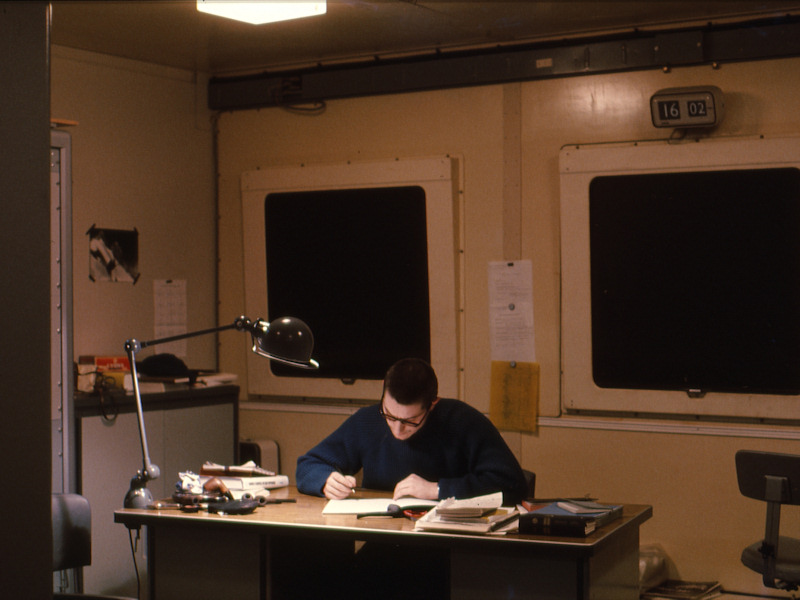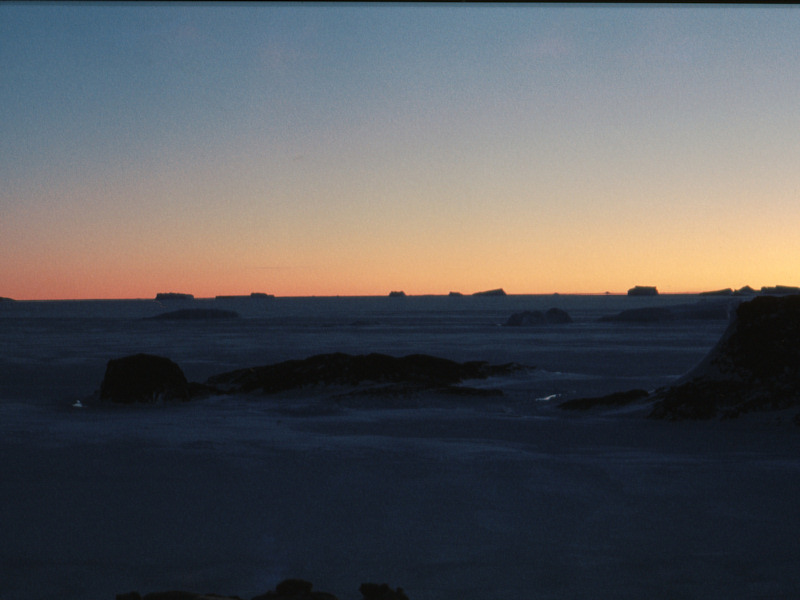
Photo album: "Activities on the base"
Fly over a photo with the mouse to enlarge it
Click on a photo to open it in a new window
The nearer we are from "Mid-Winter" (June 21st, winter solstice for the south hemisphere where night is the longest of the year), the shorter daylight duration becomes. We take, then, the opportunity to visit a few buildings of the base and meet some members of the expedition. We are 27 on the base including: the expedition leader (or chief of district, on the administrative terminology); the physician (who can become a surgeon or a dentist, if necessary), the cook (who is also a baker and a pastry chef), the "technical staff" (who keep the base operational) and the "scientific staff" (who operate the scientific equipments, but who are mainly engineers or technicians and rarely, save for the biologist, scientists).
 |
We enter "Labo 2" through a twin-door system which prevents direct contact between outside and inside, and insures thus protection against cold and snow. Every building ingress follows this rule. |
 |
The Iono team is composed of Jacques Lavergnat, responsible, Bernard Counit and me. Jacques is working behind his desk. |
 |
The devices to monitor the ionospheric soundings and to record data sent by different instruments, measuring other parameters of the ionosphere, situated in different locations on Pétrels island. |
 |
In the Rayco lab, domain of Alain Lamalle, the equipment to detect and count cosmic rays. |
 |
The Sismo lab, realm of Jean-Claude Lancelot. The sensors are situated in a "cellar" in a central place of the island, as far as possible from human activity zones. |
 |
In Meteo lab, Guy Fisher, radar specialist, in front of his electronic instrumentation. |
 |
We are now in the heart of winter. The day duration becomes shorter and shorter |
 |
Sunsets seem never ending (as the light is very feeble, we can notice, on the photo, that the stars have moved during the exposure duration). |
 |
The sky takes beautiful colours. |
 |
Last days before winter solstice. Sunrise and sunset are now merging. |
 |
At noon, the sun no longer takes off the horizon. |
 |
After dinner, we gather in the sitting room and our two elders, Jacques Chesneau (Meteo) and Emile Guyon (radio technician) seize the opportunity to enjoy a lollipop. |
.
.
.
.
.
.
.